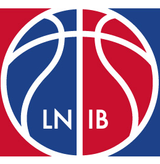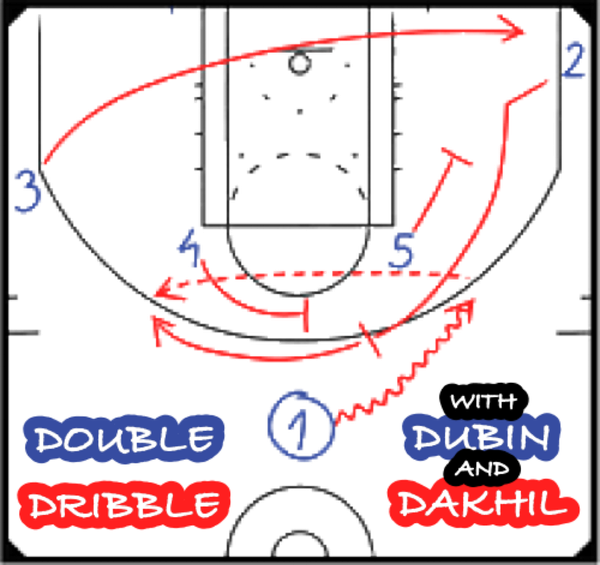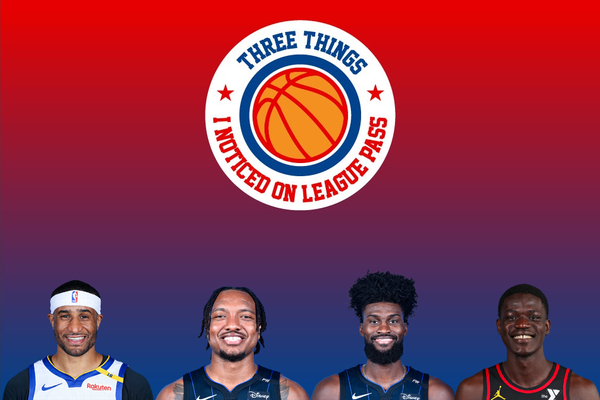Three Things NBA Preview: Minnesota Timberwolves
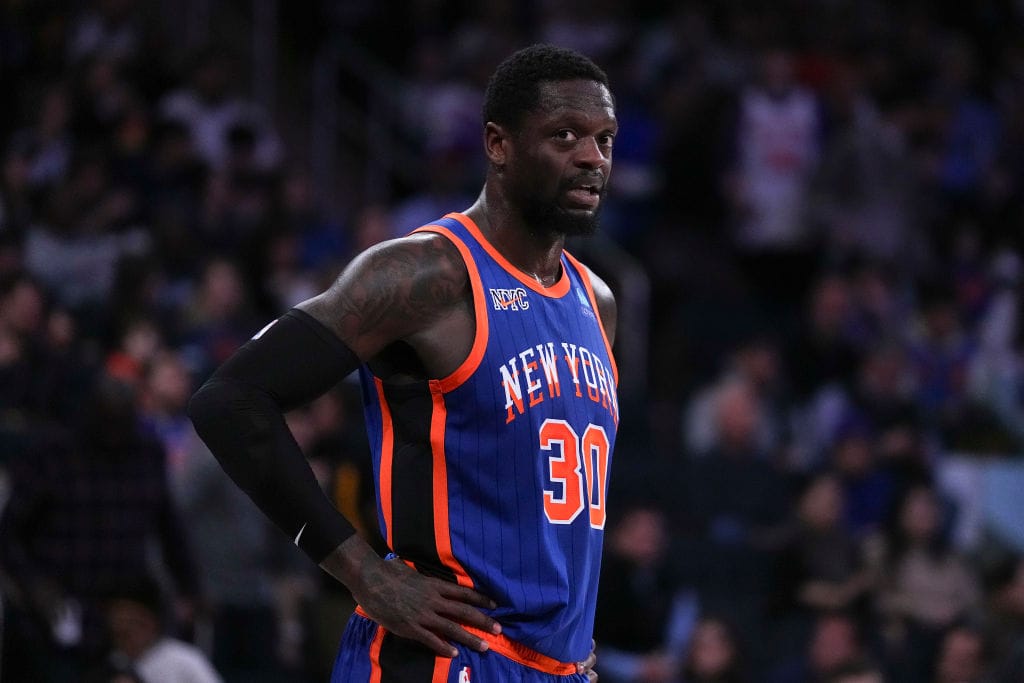
As I detailed a few weeks back, I’m re-appropriating the Three Things I Noticed on League Pass format to preview the upcoming season. Instead of three things I noticed, it’ll be something more along the lines of three things I’m looking forward to, interested in, or want to see. Or something like that.
The schedule for those posts will be as follows (with links for completed posts):
- Atlantic Division (BOS, BKN, NYK, PHI, TOR)
- Central Division (CHI, CLE, DET, IND, MIL)
- Southeast Division (ATL, CHA, MIA, ORL, WAS)
- Pacific Division (GSW, LAC, LAL, PHX, SAC)
- Oct. 7-11: Northwest Division (DEN, MIN, OKC, POR, UTA)
- Oct. 14-18: Southwest Division (DAL, HOU, MEM, NOP, SAS)
So without further ado, let’s get to the Minnesota Timbervolves.
The trade, analyzed
I didn’t write about the Karl-Anthony Towns for Julius Randle and Donte DiVincenzo (and a protected first-round pick) trade right away because it wasn’t immediately clear how the Knicks would cobble together the salary to complete it, and I wanted to reserve full judgment until we saw that. Of course, I should have assumed Brock Aller would find a way to get there without including any actual rotation players. New York’s gambit of sign-and-trading three different players for $1 more than then minimum to make the money work was genius, and honestly hilarious. But we’re here to talk about the Timberwolves. (I’ll get into it from a Knicks perspective closer to opening night. I need to finish this series first.)
I think there are a few different angles from which to analyze this, and I want to tackle them separately.
The Money
This is almost surely the primary motivating factor behind the deal, from Minnesota’s perspective. The Wolves have not paid the luxury tax in its current form, though they are still set to have one of the biggest tax bills in the league this season. But the deal does save them a ton of money.
This year alone, they trimmed just over $4.6 million off their books. That reduces the tax bill by [I’m not doing the math but it’s a lot]. And because Randle’s contract is up at the end of this season, it could save the Wolves as much as $172,428,330 over the following three years. (That’s the value of Towns’ contract minus the two years remaining on DiVincenzo’s.)
With the team’s ownership situation highly uncertain, that matters. To ownership, at least. And theoretically to the team, because of the penalties that come with being over the first and/or second aprons.
Breaking up Towns’ contract into two smaller pieces also helps the Wolves pivot into something else more easily, if they decide that’s the route they want to go. As we saw with this trade, it’s difficult to make the money work when one or both teams involved in a deal is over the apron. Dealing Randle on a ~$33 million salary or DiVincenzo on an ~$11 million salary is significantly less complicated than dealing Towns on his ~$49 million salary. I’ve talked about this several times as it pertains to players like Bruce Brown, Clint Capela, and more. They’re good, but so expensive that it’s hard to acquire them without giving up a player (or players) of consequence.
With Randle in the final year of his deal, it’s entirely possible that Minnesota elects to spin him forward into something else at or before the deadline. Speaking of…
Here for a good time, not a long time?
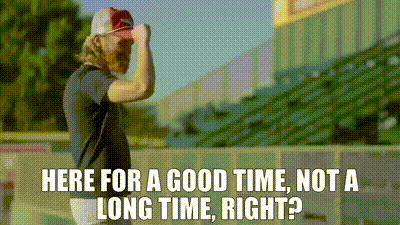
The fact that Randle’s deal is up at the end of the year makes this a hard trade to evaluate from Minnesota’s perspective. Is it that good of a move to trade Towns for one year of Randle, three of DiVincenzo, and a highly-protected first-round pick? It’s not like they get a ton of financial maneuverability if they let Randle walk for nothing in return. They’re still paying Anthony Edwards, Rudy Gobert, and Jaden McDaniels a whole bunch of money and they will presumably be paying to re-sign Naz Reid and perhaps Nickeil Alexander-Walker. They might need to find a Gobert replacement in two years, and they might need to do the same for Mike Conley. (More on that later.) But do they really want to pay what it’ll take to retain Randle? I suppose they’ll let what happens on the court over the next few months play a significant role in that decision.
I’m less concerned than are others about Randle’s fit with Gobert. He made things work pretty damn well alongside Mitchell Robinson, who is somehow even less of an offensive threat — and even more paint-bound — than is Gobert. Chris Finch has shown some willingness to run 4-5 pick and rolls, and he should lean even more into that with Randle, who is a better ball-handler and passer than Towns. He ran about 11 ball screens per 100 possessions after those disastrous first six games of last season — far exceeding anything he had done previously. (His career high for any season was 7.6 per 100 in 2021.)
Randle’s post passing is also an asset, and could create some quality looks for Edwards and especially Conley. (Conley is the most likely entry passer because he’s really good at it.) He generated 1.140 points per direct post-up with his passes, via Second Spectrum. For comparison, Towns generated just 0.692 points per possession in the same situations. Randle created a ton of good shots for Jalen Brunson that way last season, prior to his season-ending injury.
I’m more concerned with Randle’s fit with Edwards than with his fit with Gobert. Edwards is obviously a different player than R.J. Barrett, but the concerns we saw with those two plays into what could be a diminishing returns effect with the Wolves’ new duo. Randle is at his best with the ball in his hands. But if the ball is in his hands, then it’s not in Edwards’ hands (or Conley’s). Edwards is much more of an off-ball threat than is Barrett, but given how much each of them (and Randle) like to get downhill on the drive, and how they operate in similar areas on the floor, there could be some awkwardness with the two of them.
I’d expect to see Finch stagger Edwards and Randle in the lineup to alleviate some of this awkwardness. The Knicks rarely did that with Randle and Barrett, and both players (especially Barrett) were worse off for it. Pairing Randle with McDaniels in a stagger, and Edwards with Gobert, would make a bunch of sense. Reid could anchor the Randle unit as the center and space the floor for the Edwards unit alongside Gobert. Having Reid, DiVincenzo, and Rob Dillingham spacing the floor for Randle on mixed bench units would be pretty sweet.
The sniper
As I wrote during last year’s playoffs, DiVincenzo essentially morphed into prime Klay Thompson after Randle and OG Anunoby’s injuries:
In 35 games between January 29 and the end of the regular season, DiVincenzo racked up 21.0 points, 4.4 boards, 3.3 dimes, and 1.6 swipes a night, while shooting 43.4% from the field and 38.7% from deep while taking an incredible 11.9 triples per game.
Tell me how much of a difference you see between what DiVincenzo did in that latter stretch and, say, any of Klay’s five All-Star seasons:
Obviously, Klay shot it better, though that is owed in significant part to Donte’s demonstrably higher three-point attempt rate. Threes accounted for 68.7% of his shots, while they made up somewhere between 42% and 52% of Klay’s during that five-year stretch. DiVincenzo made 53.7% of his two-point shots during that finishing kick, while Thompson was between 48.1% and 52.6% in each of his All-Star seasons.
The effective field-goal percentages, accordingly, are basically the same: 56.7% for Donte and somewhere between 55.3% and 58.5% for Klay. (And it was 56.5% for the five-year run as a whole.)
Should we expect that to be the new normal for him? Obviously not. But I do think the baseline expectation for his volume and efficiency should be raised. He’s already shown he can handle much more than he did early in his career.
My concern, though, is his place in the lineup. He and Reid should be one of the NBA’s best bench duos. They are going to absolutely scorch nets. But how much playing time is available for him? And more specifically, how much playing time is available for him with the players for whom his elite floor-spacing ability is most valuable? Without question, his shooting brings with it the most leverage when he’s on the floor with Edwards and/or Randle. But if he’s coming off the bench (and he almost surely is), that naturally reduces the amount of time he will (or even can) spend on the court with those players.
This becomes somewhat less of a concern if Randle leaves at the end of the season and then Donte starts; but that still leaves Reid off the bench, and if Minnesota is going to pay him, that seems unlikely to actually happen. So unless Minnesota is planning to have DiVincenzo take Conley or McDaniels’ spot in the lineup (not advisable; they need McDaniels’ defense and their offense typically falls apart when Conley isn’t out there to organize things), then finding a way to maximize his impact is going to be more difficult than it appears on the surface. There’ll obviously be plenty of occasions where they can do it, but it’d definitely be more powerful if he were able to play with the starters more often.
Mike Conley, and his apprentice
Before the trade, it looked like Minnesota’s most significant addition this offseason was going to be Rob Dillingham. The move to go get him was actually a pretty creative and impressive one; the Wolves had essentially no avenues to improve their team during free agency due to the apron rules, so they used one of their few (at the time) remaining assets to move up the board and take an upside swing on a player who can hopefully be a microwave bench scorer early in his career and a starter next to Anthony Edwards in the backcourt later on.
Dillingham had some pretty ridiculous numbers at Kentucky: He averaged 15.2 points, 2.7 rebounds, 3.9 assists, and a steal per game, but he did it in only 23.3 minutes a night. And while shooting 44.4% from three on 4.5 attempts per game. Translated to per-40 minutes, he was at 26.1 points, 5 rebounds, 6.6 assists, and 1.8 steals. (College games are 40 minutes long, but I’m still not sure why sports-reference does per 40 instead of per-36.) That's pretty outrageous.
Since 2000, only 10 other players have averaged 25-5-6-1.5 per 40 minutes in a season. Only two of them (Markelle Fultz and Marcus Green, the latter of whom attempted FIFTY-ONE shots per 40 minutes for the 2005-06 Purdue Boilermakers) have done it as a freshman. Just one (Fultz) has done it while shooting better than 40% from deep. The full list includes Ja Morant, Steph Curry, and J.J. Barea (twice!).
Dillingham is a pretty different player, though, than Conley. Conley led the country in both assists and steals per game in 2007, but because he played with Greg Oden, he wasn’t nearly as much of a scorer. Even in the NBA, where Conley took his scoring to another level for much of his career in Memphis and even Utah, he’s mostly been a more traditional point guard. (His career usage rate is 21.1% and his assist rate is 28.7%.) But he’s without question one of the smartest players in the NBA, and the Timberwolves can absolutely count on him to pass on whatever knowledge he has to Dillingham so long as the rookie asks the right questions of the vet. And acquiring some of that knowledge and blending his skill set with some of the things Conley does well should serve Dillingham — and the Wolves — better in the future.
The all-time great defense, sustainable?
Minnesota last season had one of the best defenses in recent memory. Its 109 points allowed per 100 possessions mark was 2.3 points better than the next-closest team. By being 6.3 points per 100 better than the league average, the Wolves posted a 94.5 DRtg+, the 27th-best mark since the ABA-NBA merger back in 1976. (That's 27th out of 1,320 team-seasons, by the way.)
Among the top 30 DRtg+ seasons in my database, six of them come from teams who got there in back-to-back (or back-to-back-to-back-to-back) seasons:
- The 1992-93 and 1993-94 Knicks.
- The 2003-04, 2004-05, 2005-06, and 2006-07 Spurs.
- The 2007-08 and 2008-09 Celtics.
- The 2010-11 and 2011-12 Celtics.
- The 2010-11 and 2011-12 Bulls.
- The 2012-13 and 2013-14 Pacers.
Can Minnesota join that list?
All of those units had elite defensive anchors (Patrick Ewing, Tim Duncan, Kevin Garnett, Joakim Noah, and Roy Hibbert). The Timberwolves have that in Gobert, obviously. He’s getting closer to his mid-30s, but so was Garnett when he anchored those Celtics teams; it can be done. And he literally just won Defensive Player of the Year like five months ago. It’s not like he’s really slowing down just yet. Minnesota also has a pair of wing defenders who are either consistently elite (McDaniels) or elite when fully, 1000% locked in (Edwards), which is of even more importance today than it was during the eras that the above teams played.
But defense, generally, is less sustainable at an elite level year-to-year than is offense. And even a slight slip from Gobert — as small as 5% — changes things in a big way. So does the presence of Randle. Like Towns, he’s not a great rim protector. Like Towns, he can be spacey and unengaged. He’s a little bit more versatile in terms of his ability to defend in space, but the relative lack of size and length compared with his predecessor could have an effect on things.
None of this is to say the Wolves can’t remain the best defense in the league, or one of the best in modern history. It’s just really, really difficult to keep doing that year after year. And unless their offense takes a pretty significant step forward (it was 16th in the NBA last season), they need it to maintain that truly elite standing.

